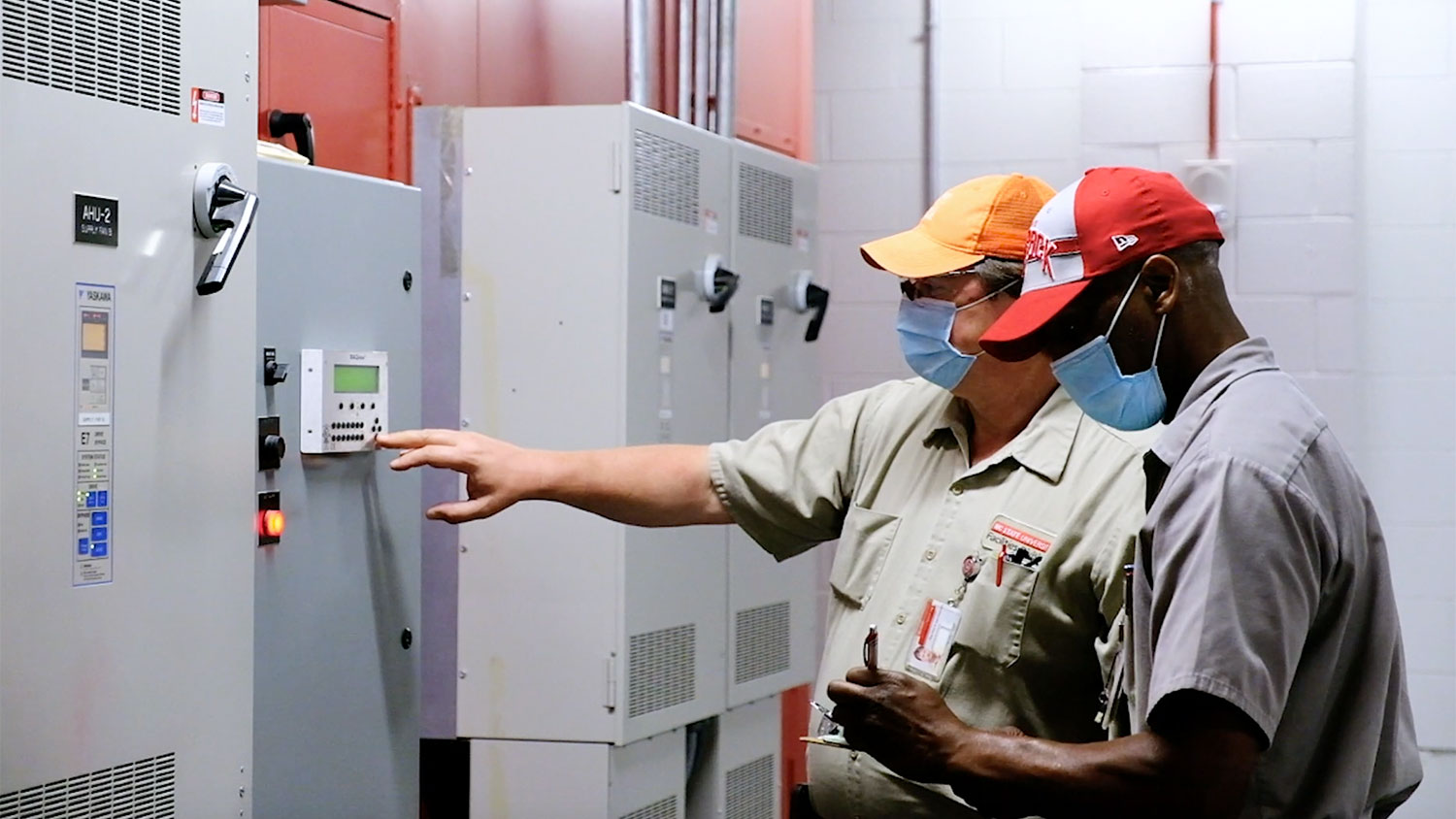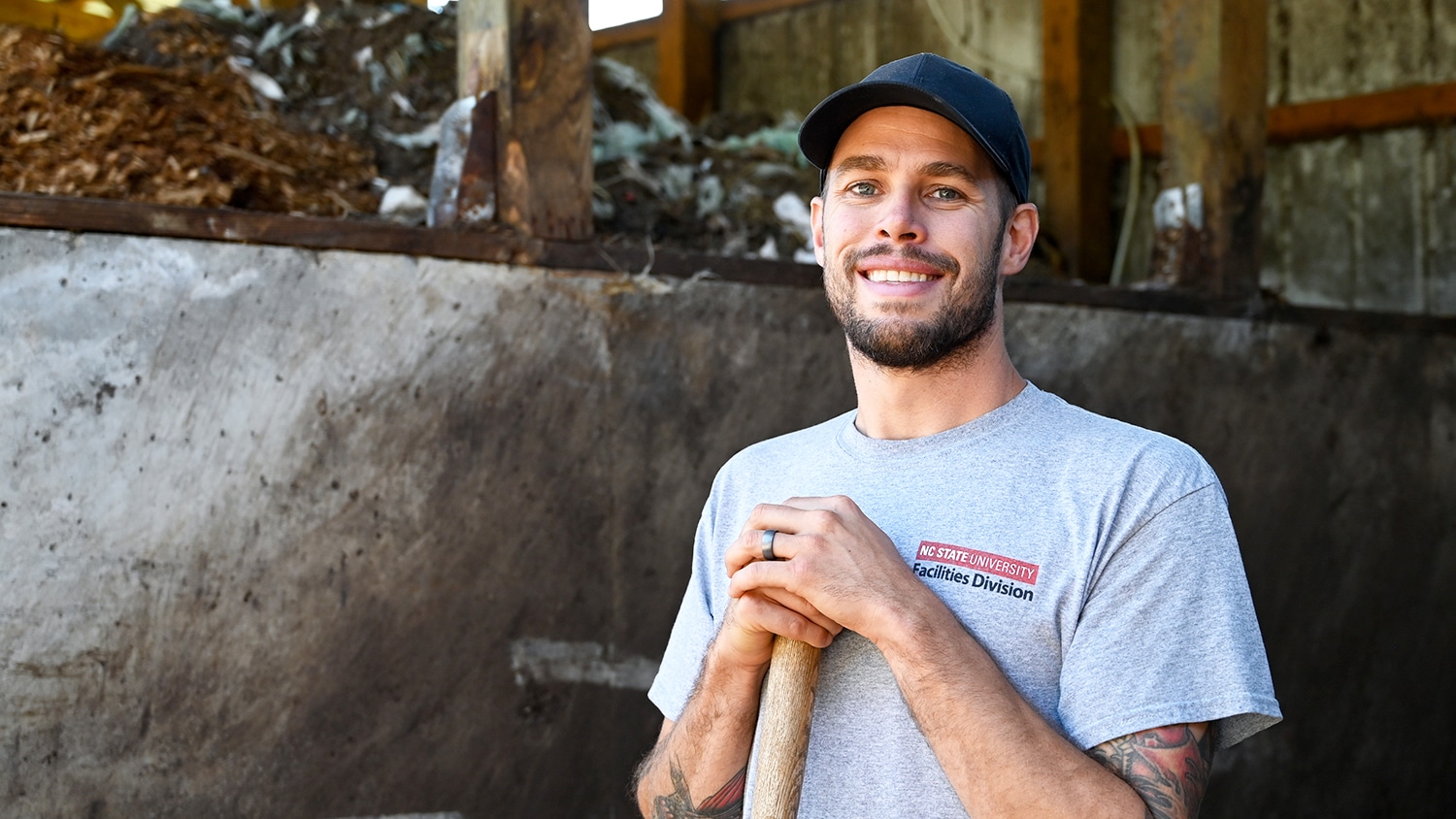Top (Air) Quality
NC State employees work tirelessly during the COVID-19 pandemic to develop and implement an indoor air quality plan that helps keep students, faculty and staff safe.

Walking around campus it’s easy to see many of the ways the university has responded to the COVID-19 pandemic, from students and employees wearing face coverings to the abundance of signage about community standards, test site parking and more.
But some of the biggest changes on campus affect something you can’t see — indoor air quality.
Employees from the Facilities Division and Environmental Health and Safety have worked tirelessly since last spring to develop and implement a comprehensive indoor air quality plan that aims to keep students, faculty and staff safe.
“There are many actions together that create a safe and healthy indoor environment for our facilities, starting with the university’s community standards for mandatory face coverings, physical distancing and reduced occupancy in all buildings,” says Allen Boyette, senior director for energy systems. “A properly operating HVAC system is one more added component to ensure a safe indoor environment.”
Because the buildings on campus have many types of HVAC systems that were designed and installed during different periods of the university’s history, some are more effective than others. Over the summer, Facilities evaluated every university HVAC system, and a team from Facilities and EHS worked together to assign an indoor air quality rating to each building.
As part of that process, Facilities conducted complete preventative maintenance cycles on the systems, replacing filters and verifying that the outdoor air ventilation systems were working properly.
Based on the indoor air quality rating for each building, they also implemented a number of additional measures:
- Reprogramming HVAC systems across campus to provide more outside air, resulting in improved ventilation.
- Extending the operating schedules of HVAC systems by two hours before and after the normal building occupancy schedules, providing additional ventilation.
- Identifying buildings that needed additional actions, such as moving classes to alternate facilities, providing added filtration through portable HEPA units, and installing ultraviolet systems to provide additional disinfection within the air handler units.
Facilities and EHS continue to monitor guidelines from the Centers for Disease Control and Prevention and the World Health Organization, as well as industry best practices to ensure optimal indoor air quality on campus.
And their hard work during the pandemic will benefit the university for years to come.
“Through this exercise, it has become clear to us that this will be very helpful for the future,” says EHS Director Ken Kretchman. “The information gathered from this review of the various building ventilation systems will help us in many ways, even when COVID is behind us.”
- Categories:


